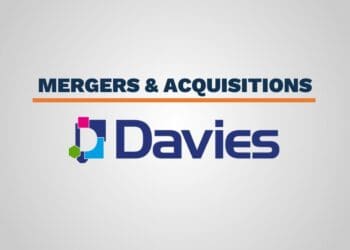The pressure to keep up with new regulations, standards and policies has become overwhelming. There’s now a real threat of business shutdowns, fines and even jail for noncompliance, which has added to the increasing levels of stress for compliance officers around the globe. In the U.S. alone, more than 50,000 regulations are imposed on businesses every year. The pressure to manage multiple audits and quickly report on the outcomes to top management has fast become a challenge for compliance officers across all industries.
Many businesses are still using inefficient systems to manage compliance, which only adds to the problem. Paper forms, spreadsheets and emails are no longer adequate for the complex tasks of scheduling, auditing and reporting in a rapidly changing regulatory environment. And this comes at a new cost: mental health.
According to an Australian Bureau of Statistics National Survey, one in five Australian adults will experience mental illness in any given year due mainly to workplace-related stress. In its Incidence of accepted workers’ compensation claims for mental stress report, Safe Work Australia says “typically mental stress claims result in workers being absent from the workplace for long periods of time. The loss of productivity and absence of workers is costing Australian businesses more than $10 billion per year.”
And the problem is not confined to Australia; a recent study conducted by the Society of Corporate Compliance and Ethics (SCCE) and the Health Care Compliance Association (HCCA) confirmed these findings in some disturbing results: 58 percent of the 970 respondents say they often wake up in the middle of the night worrying about job-related stress. And 60 percent say they have considered quitting their jobs in the past 12 months due to work-related stress.
So you have to ask, is the cost of mental health worth the delay in investing in purpose-built technology that will improve compliance and audit management?
“Surprisingly, many companies don’t have a formal process in place to actively monitor compliance either internally or for third parties like contractors and supply chains, but those who have made the investment are reaping the benefits,” says Tony Stephenson, Director of Melbourne-based consultancy, Compliance Experts.
Fortunately, some businesses are starting to see the light, according to the 2014 OCEG GRC Technology Strategy Survey, in which 51 percent of respondents stated that governance, risk management and compliance (GRC) technology in their environment was currently under-utilized. Of the top criteria for influencing their choice on new GRC technology solutions, 49 percent rated “ease of use” as most important, followed by price (46 percent) and functionality (44 percent).
The survey also reported a growing interest from organizations (around 67 percent) to adopt subscription-based, cloud-hosted solutions.
George Mifsud, Executive Director for Compass Group (Australia) says, “Compliance audits ensure that we have a consistent service delivery model. And using technology like the new Compliance Checkpoint app gives me the comfort that we are meeting our duty-of-care requirements, because it is now traceable, auditable and all the information is backed up in the cloud.”
It appears that the right technology can play an important role in creating a safe and healthy workplace. It addition, it makes good business sense, reducing staff turnover, achieving greater staff loyalty and engagement and minimizing the costs associated with worker absences and workers’ compensation claims.














